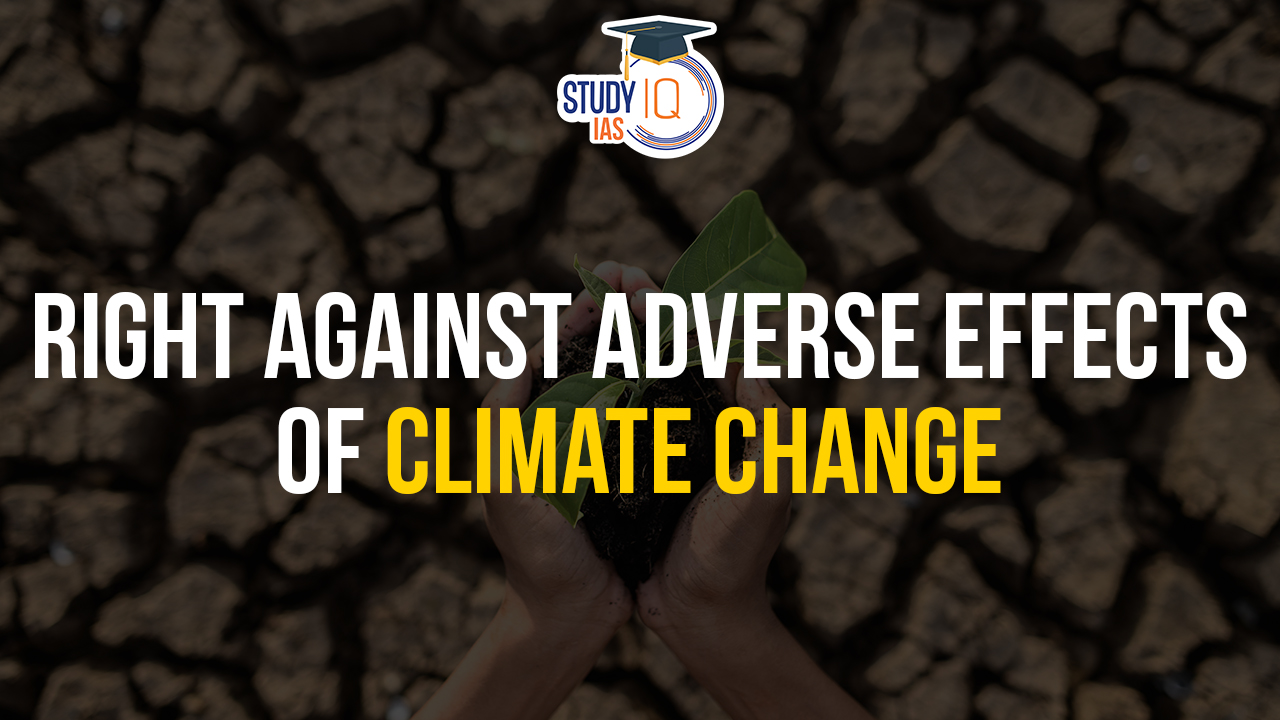Table of Contents
Context: The Supreme Court has expanded the scope of Articles 14 and 21 to include the “right against the adverse effects of climate change”.
In a landmark judgement passed on April 6, 2024, the Supreme Court of India recognized the right to be free from the adverse effects of climate change as an integral part of the fundamental rights guaranteed under the Indian Constitution.
Basis for the Supreme Court Decision on
Right Against Climate Change
- Articles 48A (protection of the environment) and 51A(g) (duty to protect the environment) of the Constitution, though not enforceable rights themselves, indicate the importance the Constitution places on the natural world.
- Right to life (Article 21) cannot be fully realised without a clean and stable environment.
- Factors like air pollution, climate-driven health issues, food scarcity, and extreme weather events all violate the right to life and equality.
Reasoning Behind SC Decision
- Climate change harms rights to life, health, and equality.
- Poorer communities suffer disproportionately from climate change.
- A clean environment is necessary to fully realise the rights to life and equality.
Background of Case
- Judgement based on a petition for Great Indian Bustard (GIB) protection, an endangered bird in Rajasthan & Gujarat.
- GIB habitat overlaps with areas of major solar & wind energy projects.
- Centre argued that SC’s decision may hinder India’s efforts to reduce its carbon footprint.
| Important Facts |
|
Laws for Better Climate
The Supreme Court recently recognized the right against adverse effects of climate change, but there’s no single law for climate change in India. The Constitution lacks an explicit legislative entry for a decentralised approach to environmental issues.
Challenges Related to Climate Change Legislation in India
- Absence of a Single Law: Despite recognizing the right against climate change impacts, India lacks a dedicated law to address climate change comprehensively.
- Article 297 of the Constitution, focuses on the control over “things of value” within territorial waters, which indirectly included discussions on water ownership.
- The Constitution reflects an anthropocentric view of the environment, seeing it as a resource for extraction.
- Limited Constitutional Viewpoint: The Constitution reflects a limited perspective on the environment, viewing it as a collection of resources for extraction (e.g., discussions during the creation of Article 297). This anthropocentric view fails to recognize the environment’s intrinsic value and interconnectedness.
- Fragmented Legal Structure: Environmental protection is divided across various laws for water (Entry 17 of the State List), air (e.g., Air (Prevention and Control of Pollution) Act, 1981), and forests (e.g., Forest Conservation Act, 1980).
- This fragmented approach makes it difficult to establish a holistic strategy for environmental protection and climate change mitigation.
- Centralised Power Structure: The current legislative power for environmental issues is not decentralised. The States lack primary control and rely on the Centre for financial support, despite being better positioned for local action.
- Varied State Vulnerability: Different states experience climate change impacts unevenly. A centralised approach might not be effective in addressing these local variations.
- Local decision-making is crucial due to the varying vulnerability of states to environmental emergencies (e.g., recent floods and droughts in Karnataka).
- Implementation Bottlenecks: State-level climate action plans often face limitations due to a lack of financial backing from the Centre.
- For instance, recent state-level climate action plans have faced bottlenecks due to a lack of central funding, hindering implementation.
Way Forward
- The environment needs to be explicitly recognized in the Constitution’s Concurrent List.
- This would enable:
- Decentralised decision-making with states taking the primary role.
- A central role for the Centre in climate emergencies.
- Reimagined form of Indian federalism, grounded in the principle of subsidiarity, to address the localised impacts of climate change effectively.
- By enhancing the role of state governments in environmental governance and ensuring they have the necessary financial resources, India can better tackle the myriad challenges posed by climate change.


 Monasteries in India: List of Major and ...
Monasteries in India: List of Major and ...
 National Doctor’s Day 2025: History, T...
National Doctor’s Day 2025: History, T...
 Bonalu Festival 2025: Date, History, Rit...
Bonalu Festival 2025: Date, History, Rit...





















